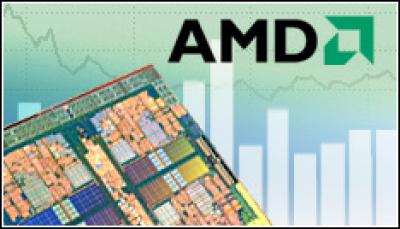AMD Benefits From Huge Intel Settlement

AMD has made its first profit in three years, thanks in no small measure to the whooping £772 million legal settlement with Intel
AMD had recorded its first profitable quarter in three years, helped by the $1.25 billion (£772 million) legal settlement with bitter rival Intel.
AMD saw a $1.18 billion (£729 million) profit on almost $1.65 billion (£1.02 billion) in revenue, according to numbers the company released 21 January.
Compare that with the fourth quarter in 2008, when AMD lost $1.44 billion (£889 million). Revenue was 18 percent higher than in the third quarter in 2009 and 42 percent higher than fourth-quarter revenue in 2008.

AMD CEO Dirk Meyer, in a conference call with reporters and analysts, said it was a “solid quarter,” adding that the numbers in most of the company’s business units were up.
Like officials at rival Intel, which on 14 January reported soaring financial numbers, Meyer said AMD saw demand in several areas increase, including laptops and servers, aided by businesses’ adoption of the six-core “Istanbul” Opteron processor.
Istanbul sales accounted for 60 percent of AMD’s server revenues, and are giving the company momentum in the competitive two-socket server space, he said. The chip also is giving AMD a greater presence in the HPC (high-performance computing) and cloud cluster environments.
Meyer also touted the excitement around AMD’s portfolio of discrete ATI Radeon 5000 graphics products, and touched on the company’s concerted push farther into the laptop space, where he said AMD is “comparatively underpenetrated.”
That is paying off, he said, pointing to Lenovo’s January rollout of its first AMD-based notebooks, running both Athlon Neo and Turion chips.
The settlement with Intel was key for the company in several ways, not the least of which was it included the $1.25 billion (£772 million) payment that AMD was able to use to begin reducing debt. It also included a five-year cross-licensing agreement that will let AMD reduce its stake in Globalfoundries, the company created with Abu Dhabi’s Advanced Technology Investment Co. when AMD spun off its manufacturing business.
Meyer said AMD in the fourth quarter saw enterprises beginning to refresh their ageing IT hardware, as illustrated by the interest in Istanbul and OEMs’ interest in building notebook PCs for businesses. He mentioned two Lenovo ThinkPads aimed at small and midsize businesses as examples.
However, both he and AMD Chief Financial Officer Thomas Seifert were hesitant to predict whether that enterprise refresh push would continue into the first half of 2010.
“Some enterprises are clearly looking to upgrade some of their infrastructure now,” Meyer said.
He said the company was on track to release its “Maranello” server platform, which will feature “Magny-Cours” Opterons that will have up to 12 processing cores.